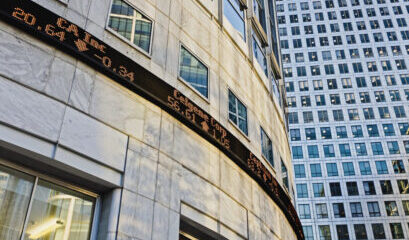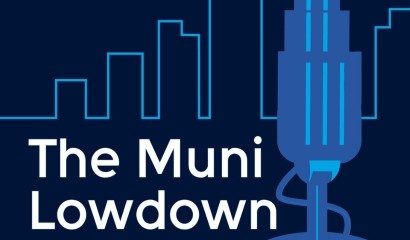OEC in-court restructuring to test limits of court oversight on plan voting rights
Odebrecht Engenharia e Construcao (OEC) recently obtained creditor support for its debt restructuring plan, and the court handling the case is expected to decide whether to sanction the plan approval within the next few days. In making his ruling, Judge Paulo Furtado de Oliveira Filho of the Second Bankruptcy Court of Sao Paulo will need to consider the objections presented by certain opposing creditors (including bondholders Fidera Master, Pala Assets, SAB Capital Management, Bayleef Services, Raphael Jordan Kassin and Thesee Fund SPC), who assert that there has been an abuse of voting rights by Brazilian bank BTG Pactual. In this article, the Debtwire legal analyst team discusses the objections and other considerations to be weighed in connection with sanctioning of the plan.
Bankruptcy filing and challenged plan approval
The heavy construction arm of the Novonor (formerly Odebrecht SA) conglomerate filed its in-court reorganization process on 27 June 2024 to deal with roughly BRL 90bn in debt. Related parties hold BRL 65bn of the impaired claims, and the remaining claims stem mostly from international bond debt. Judge Furtado admitted the bankruptcy protection request on the same day it was commenced, and on 9 September the company filed its debt restructuring plan.
The repayment proposal is centered on a USD 150m debtor-in-possession (DIP) financing facility, of which USD 120m is backstopped by BTG Pactual, OEC’s largest bondholder. As the holder of USD 1.07bn of the total USD 4bn of bond debt, BTG’s vote in favor of the plan was pivotal for its approval at the creditor meeting held by the company on 22 November, as highlighted in the chart below:
Source: Court filings
However, according to the objecting bondholders, Judge Furtado should not ratify the plan approval, and should exclude BTG’s vote as abusive. They accuse BTG of having a conflict of interest due to the arguably “excessive and exclusive incentives” it will be awarded as the anchor lender of the DIP, which were not shared with other creditors. These include (i) excessively high restructuring fees; (ii) a better repurchase price for its prepetition claims; (iii) becoming the only shareholder of the newco to which OEC key assets will be transferred; and (iv) the right to choose – following the plan confirmation – which assets will be offered by OEC in guarantee of the DIP.
According to the dissident bondholders, OEC intends to get rid of all the bond debt by paying a percentage of just 1%, which was only possible due to BTG support. As the majority creditor, BTG arguably voted in favor of a plan that in practice leads to the elimination of its prepetition claim (and also of the claims held by all the other bondholders), in exchange for receiving benefits not shared with anyone else.
Source: Debtwire’s Restructuring Database
OEC refuted those arguments in its response, asserting that the plan provisions in question are permissible and were constructed with a group of creditors in accordance with the applicable law, resulting in an approval of more than 97.63% of the total claimholders attending the meeting.
Citing Superior Court of Justice case law, the company also argued that courts should limit their oversight on the legal aspects of approved plans and voting proceedings, regardless of the plan economics and the viability of the repayment proposals supported by the majority of impaired creditors. In other words, the opposition of a small portion of creditors over the financial terms of the repayment conditions of their claims should not lead the court to deny confirmation of the plan.
OEC also noted that bonds are securities traded in the secondary market on a daily basis, with prices subject to wide fluctuations depending on the economic health of the issuer. In this case, OEC bonds suffered a significant devaluation of roughly 65% since they were issued in 2020, which justifies the large haircut rate provided for in the plan. The bondholders who are opposing the haircut rates are the same bondholders who acquired the bonds at prices much lower than their face value, for speculative purposes. As a result, their objections should be rejected and the plan approval should be sanctioned, the company says.
BTG also asked the court to reject the dissident creditors’ arguments and ratify the creditor approval of OEC’s debt restructuring plan. As a prepetition creditor holding more than USD 1bn of the debt to be restructured by the bankruptcy, it aims to maximize the recovery of its claims, just like any other bondholder; in parallel, as a post-petition DIP facility lender, it decided to provide the company with fresh money in exchange for fee rates proportional to the risks involved in the transaction.
According to the bank, the fact that it simultaneously holds two distinct, coexisting positions is not only allowed, but in fact incentivized by Brazilian bankruptcy law, and should never lead the court to deem its vote in favor of the plan as conflicting or abusive.
Brazilian bankruptcy law and case law – abusive votes
Section 39, § 6 of Brazilian bankruptcy law provides that creditors are free to vote for the approval or rejection of restructuring plans in accordance with their personal interests, and a vote should be declared null for abuse only if it “manifestly” results in unlawful advantage for the creditor or third parties. This provision was included in the country’s law via a major reform that became valid in early 2021.
Source: Debtwire’s Restructuring Database
Prior to the reform, there was no statutory guidance governing abusive votes, which led to disputes in several high-profile in-court restructurings. In Base (formerly Schahin), for example, the court ruled that the votes of a syndicate of 13 banks for the plan rejection were abusive and removed them from the voting tally, reasoning that (i) the banks refused to negotiate with the company for a better treatment of their claims under the plan; and (ii) there was no economic reason for the banks to reject the plan, as the liquidation alternative would not give them an improved recovery.
Similar reasons led the court assigned to rule on the Constellation bankruptcy to void a bondholder’s vote against the plan for abusiveness. In that case, the court also found that the repayment proposals provided for in the plan would give the bondholder a better recovery than it would receive under a liquidation. The court also noted that there was strong evidence that the bondholder voted against the plan for reasons unrelated to the recovery of its claims.
Additionally, in Grupo Virgolino de Oliveira, certain dissident creditors claimed that the votes of bondholders in favor of the plan were abusive, as they arguably benefited from their control of the unsecured claim class to collude with the company, which harmed the remaining creditors in that class. In this case, however, the court handling the case rejected those arguments and ratified the plan approval, reasoning that bondholders negotiated with the company throughout the entire process and their votes were provided with “economic and financial rationale”, so they could not be considered abusive.
Conclusion – plan confirmation to incentivize Brazilian DIP market
The precedents cited above allow a conclusion that creditor votes on a plan shall be deemed abusive or conflicting when they appear to be devoid of economic rationale, which may include either (i) rejecting a plan whose recovery estimates are better than those stemming from liquidation; or (ii) supporting a plan with repayment proposals worse than those that would result from the plan rejection.
According to the OEC dissident bondholders, this is the situation in the present case, with BTG supporting an arguably unacceptable plan (from a prepetition creditor perspective) in exchange with an extremely attractive opportunity of post-petition funding. On the flip side, the company and the creditor/anchor lender BTG also have solid arguments to ground a conclusion that there were no illegalities in the plan approval proceeding, which counted on the support of the majority of the claimholders in terms of both headcount and claims amount, as set forth in the law.
Considering the arguments presented by all the involved parties and summarized above, the Debtwire legal analyst team believes that BTG’s vote is unlikely to be ruled as abusive, and therefore the creditor plan approval has a good chance of being sanctioned. Even if the court considers that a negotiation between OEC and BTG has led to the approval of a debt restructuring plan deemed unfair by the remaining creditors, it does not mean that BTG’s vote was abusive, as it seemingly does not lack economic or financial rationale. In addition, BTG would not be in a better position if the plan was rejected and OEC’s reorganization proceeding was converted into liquidation.
Furthermore, in an emergent – but still underdeveloped – DIP financing market such as Brazil’s, it is hard to find investors willing to provide distressed companies with millions of dollars in post-petition funding, especially when it comes from their largest prepetition creditor, holding more than USD 1bn in claims as in OEC. In this scenario, cancelling the votes of the anchor lender and refusing to sanction the plan could set a dangerous precedent and discourage similar transactions in the future.















